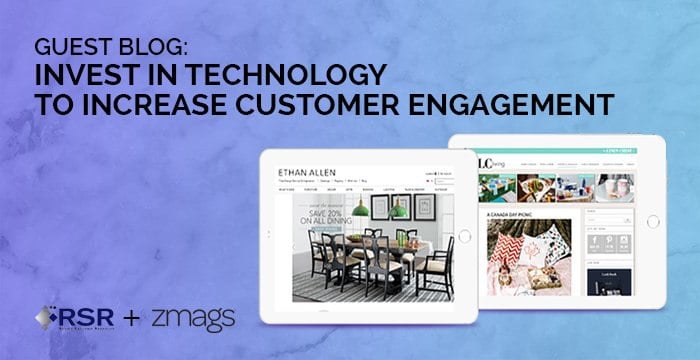You’ve “Invested In Price” For Customer Engagement Long Enough. Why Not Try Investing In Technology?


Jessica is an integrated marketing leader specializing in strategic B2B and B2C enterprise solutions.

Paula Rosenblum
Managing Partner, RSR
Retailers have been engaged in an undeclared price war for almost a decade, perhaps longer. The explosion of digital channels, most especially the mobile device introduced the notion of instant price comparisons. The emergence of Amazon.com as the low-priced provider was a gauntlet thrown down to other retailers. And retailers responded in kind: ultimately forced to meet those prices. This has caused erosion of profits and their brand identities. Price has become synonymous with “Customer Engagement,” but that’s not what Customer Engagement is all about. In today’s world, it’s imperative for retailers to re-think exactly what Customer Engagement means to them and where their best investments can be made. RSR proposes that retailers shift from making previously unthinkable investments in price to making previously unthinkable investments in technology. The purpose of these technologies is two-fold: operational efficiencies and customer engagement. This post will focus on Customer Engagement. At its most rudimentary level, “Customer Engagement” is getting shoppers to look your way. In effect, it’s starting or continuing a conversation about the value of your goods and services in relation to their needs. In this past this engagement was a one-way conversation. When consumers could only really engage in a store or on the phone, retailers didn’t have to worry about having a customer engagement strategy, or ensuring that it was consistent across touchpoints. And when the only real ways to create awareness with consumers consisted of a television campaign, some print advertising, and a really strong location strategy, retailers only had to concern themselves with what they said, not what consumers might want to say in reply. Clearly all that has changed. Consumers expect to engage in conversations with retailers, and with the vast array of ways customers have at their disposal, retailers have to spread the same resources they’ve always had across far more touchpoints, just to maintain their relevancy with consumers. The problem is retailer technology resources tend to be aged, brittle, and not so easy to change. Cobbled together within the constraints of budgets that are more antiquated than the technologies themselves, retailers do their best to engage with their shoppers, but face a choice between dwindling profits and a dwindling top-line. A sad and self-fulfilling cycle continues unabated: investments in price, lack of investment in technology, continued top-and-bottom-line erosion and continued reductions in both price and technology budgets. Through Cloud-based technologies, retailers do have the opportunity to spread their technology investments over time, lessening the one-time capital hit of a licensing fee, but raising the operating expense base. This is no small thing. In truth, the endless focus on promotions has had an equal, if not greater impact on operating profits than technology investments would. We strongly encourage retailers to contemplate what customer engagement means to them beyond price, and how they could use technology to support that engagement. Once that has been determined, we recommend making a plan and executing on that plan. To get a longer look at the state of Customer Engagement in Retail and find out the technologies Retail Winners are employing to drive that engagement, please visit our web site and read our most recent benchmark: Beyond Promotions: Reinventing Customer Engagement. About the author: Paula Rosenblum has more than 30 years’ experience in the retail industry. In her current capacity, she drives the research and content direction across RSR’s various media outlets. Paula is well known for her pragmatic approach to retail. She combines thought leadership with her practical experience in her writing, speaking, and advisory engagements.